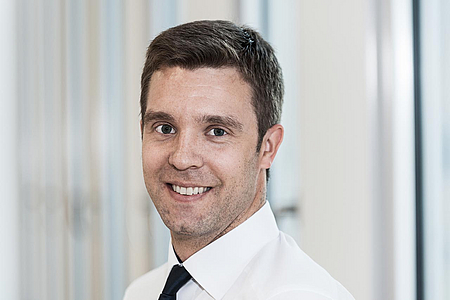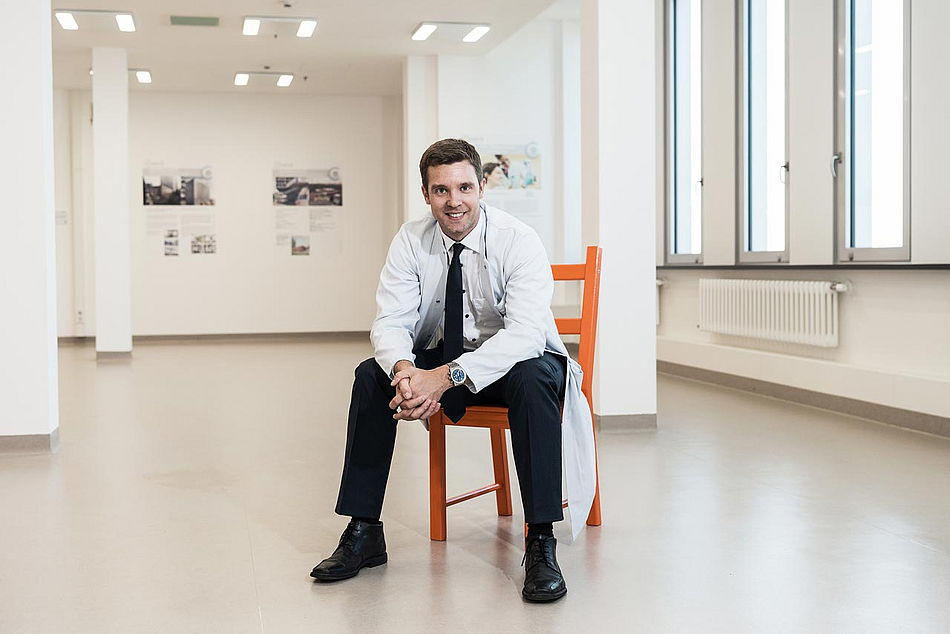Beautiful pictures of the heart
Dr. Leif-Christopher Engel works as a cardiologist on the Benjamin Franklin Campus of the Charité. As part of the BIH Charité Clinician Scientist Program he carries out scientific research at the same time. Here on FACES, he tells us about his daily working life:
“My area of specialization is heart imaging. In one study, we’re trying to find out which patients have an increased risk of having a heart attack. We’ve developed a procedure by which the heart can be made visible through a magnetic resonance imaging (MRI) examination, as well as any dangerous build-ups of plaque in it, known as “plugs”. The special feature of this examination is the special contrast medium, which we are the first to use and which enables more precise images. We hope that this will allow us to already screen patients at an early stage using the MRT and to recognize risks before the patient even starts suffering from complaints. For the patients, it would also offer the additional advantage of a more harmless, non-invasive alternative to the heart catheter examination when looking for the dangerous plugs.
Currently, a heart catheter examination is the conventional diagnosis and treatment method when a narrowing of the heart vessels is suspected. One thereby tries to discover and widen any constricted points. In addition, within the framework of our study we carry out an MRI on patients just before the operation and then compare the results of both examination methods, to see whether the MRI can make the plugs visible to an equal extent. For the patients in the study, this means that they spend extra time having an MRI, which is harmless in itself.
It was always important to me to find a niche in medicine – an area that not many people are working on and where I can build up a degree of knowledge that probably not very many people have. In fact, I’ve always been enthusiastic about imaging. This goes back to my student days. I heard an interesting lecture and then, rather by chance, wrote my doctoral thesis under the supervision of someone who was working in that subject area. Then after completing my studies, I was lucky enough to be able to take an in-depth look at medical examinations conducted in metal tubes, at the purely research level, for three years in the USA. So the topic has always evolved until today - and it still has great potential. We get new ideas every two weeks and try to pursue as many of them as possible in the time available.
Do the results confirm our hypothesis? One always has doubts: science involves risk. However, the data we’ve gained so far does make me feel optimistic. We’ve presented our results at a big cardiological congress and we’re getting good feedback. Our publications are currently going through the assessment procedures of high-quality medical journals. Nevertheless, there’s still a great deal to do: the data that we have now is basically proof of the feasibility of this method. The next step will then be outcome studies, to check the patients’ long-term development.
I’ve been a Clinician Scientist for almost three years. The program allows me, as a doctor working at a clinic, to have a guaranteed time in which I can push ahead with my research project. This kind of thing is currently difficult to obtain elsewhere in Germany. As a ruIe, in my everyday clinic routine I always do alternate “blocks” of clinic and research work. So, I treat patients or carry out diagnostic work for a few weeks – and then after that, I devote myself to my research.

Funding program
BIH Charité Clinician Scientists
Funding period
2015 – 2018
Project title
Non-Invasive detection of vulnerable plaques of the coronary arteries via molecular, cardial MRI
Research area
Cardiology
Institution
Charité – Universitätsmedizin Berlin
Since 2014
Research fellow and resident physician, Charité – Universitätsmedizin Berlin, Division of Cardiology
2012 – 2014
Research fellow and resident physician, Department of Internal Medicine, UniversityHospital Zürich, CH
2009 – 2012
Post-Doc, Cardiac MR PET CT Program, Massachusetts General Hospital and Harvard Medical School, Boston, MA, USA
The Clinician Scientist Program has definitely been worthwhile for me. The guaranteed research times make it possible to combine research and clinic work. If you only do research, it’s harder to transfer the results to the patients at a later stage. Up to now, I’ve worked as a doctor in three different countries, so I can compare them relatively well. In clinics in Germany, it’s really hard to be allowed time to do research as well. But good research is important if you want to develop a location – and developing the location must be the aim. Germany needs to catch up in this respect. But the Berlin program offers exactly the right starting point – because here, research time is given to the people who are motivated.”
September 2017 / TO
